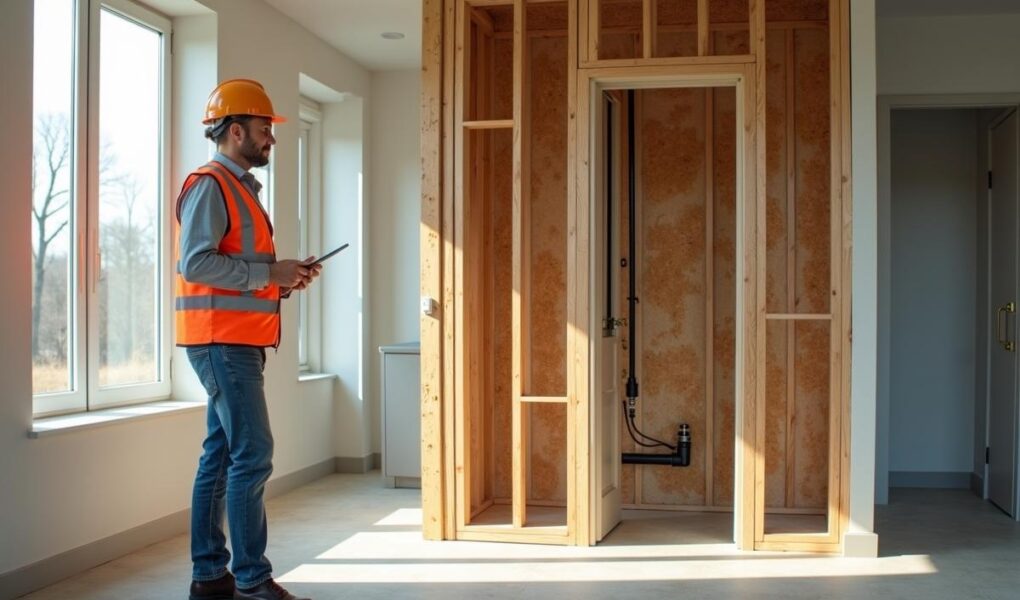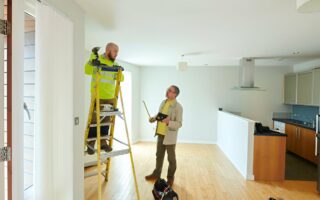When buying newly built properties, it’s crucial to understand key home inspection tips. Even though everything may shine on the surface, problems can still lurk behind fresh paint and modern fixtures. This makes the inspection process just as important as it is with older properties. In many cases, builders move fast, and small oversights can cause big headaches down the road.
New construction properties often include upgraded materials and the latest designs. Yet even brand-new builds can have hidden issues with plumbing, electrical, or structural components. Securing a thorough inspection gives you peace of mind before you finalize the deal. It also positions you to address any potential pitfalls with the builder, so you’re not left footing the bill for something that the contractor should fix.
Planning ahead to schedule an inspection is a wise first step. Too often, buyers rely on builder warranties without verifying that the structure meets quality standards. Following a strategic set of home inspection tips ensures every phase of your new build goes as smoothly as possible.
Why Professional Inspections Still Matter
It’s easy to assume that a newly constructed home passes all relevant safety checks. Local codes do require standard inspections, such as verifying proper electrical wiring and confirming that essential structural elements are sound. However, code inspectors often have limited time. Their visits can be brief, and they might not spot every minor defect.
Hiring your own inspector can reveal issues typical of rushed construction timelines, like subpar drywall installation or unsealed windows. Even a slight error could create problems with energy efficiency or moisture intrusion. Having a trained eye involved helps you catch these potential flaws before closing.
Builders may also respond better when a certified inspector’s report highlights necessary repairs. Sometimes, simply showing them the findings will encourage swift corrections. This helps you ensure quality workmanship while the builder is still on the hook for fixes.
Early-Construction Evaluations
When you opt for professional oversight, schedule at least one inspection during the early phases of construction. Many buyers wait until the final walk-through, but that can be too late to spot hidden framing or foundation concerns. By examining your home in the pre-drywall stage, you can see inside the walls and evaluate the mechanical components.
During this phase, your inspector can check that plumbing lines are properly installed, confirm that insulation meets recommended standards, and verify that electrical systems align well with your builder’s design. This is the best time to catch misaligned beams or flawed vapor barriers. Making corrections later can require tearing into finished walls, which is more costly and time-consuming.
Checking Critical Systems
One of the most essential parts of a thorough inspection involves evaluating all major systems. If you’re not a seasoned DIY enthusiast, certain details may escape your notice, like the location of drain lines or the quality of attic ventilation. Relying solely on builder warranties and final municipal inspections often isn’t enough.
Foundation and Framing
Even the most well-intentioned builder can miss small cracks in the foundation that could expand over time. Minor cracks aren’t always a cause for panic, but it’s crucial to determine which ones need immediate attention. Your inspector will look for dips or uneven flooring, ensuring the framing was done with precision.
Framing sets the stage for everything else. If joists aren’t level, flooring surfaces may squeak or warp. Misaligned beams can also stress drywall joints, leading to early cracks. A detailed inspection at this level keeps you from dealing with these annoyances after moving in.
Roof and Exterior Elements
Water damage quickly turns into a nightmare if roof flashing or shingles are installed incorrectly. The same goes for siding and gutter systems that aren’t secured well. A slight oversight in sealing exterior walls can allow moisture inside, encouraging mold and weakening your home’s structural integrity.
Your inspector will likely check windows, doors, and any exterior cladding. Missing seals or poorly attached trim can result in drafts, raising utility bills in the long run. Spotting these issues lets the builder fix them before they become major problems.
Involving the Builder and Warranty Protections
Maintaining open communication with your builder is a smart practice from the start. If you bring an inspector on board, let the construction team know ahead of time. This fosters a cooperative atmosphere and ensures that the builder will be present for any questions or clarifications during the inspection.
Sometimes, builders offer warranty periods covering certain defects for months or years after closing. This coverage often includes structural issues, electrical malfunctions, or plumbing leaks. However, not all warranties are created equal. Make sure yours covers critical areas and that you grasp any limitations. It’s also wise to explore builder warranties to see exactly what’s included, so you can hold them accountable if problems emerge later.
Builders and contractors generally want satisfied customers, and many are open to resolving issues discovered by an inspector. Ask them about their policies for making corrections. Keep all documentation from your inspections, which can serve as evidence if questions arise about the original workmanship.
The Importance of Thorough Walk-Throughs
A final walk-through holds far more weight than some buyers realize. Think of it as your chance to confirm that all punch list items are addressed. Even if you completed a pre-drywall inspection, things can slip through in the finishing stages.
Another factor to consider is the timing of your walk-through. Scheduling it too far in advance of closing can leave the door open for last-minute changes or missed fixes. Try to hold your walk-through at a date when the builder has wrapped up the major tasks. That way, you can be sure any corrections have already been completed.
Documenting Everything
During your walk-through, bring a camera or smartphone to snap photos of any issues. Writing everything down helps as well, leaving no question about what needs to be addressed. If there’s a scuffed wall or damage to cabinetry, documentation prevents disagreements over responsibilities.
Take note of any cosmetic flaws, especially in kitchens and bathrooms. Look at baseboards, tiles, sink fixtures, and appliances. Even small issues can chip away at the overall quality if left unattended.
Evaluating Safety and Performance Features
In new construction, certain features are meant to improve safety and performance. Energy-efficient windows, for instance, should help reduce power bills while keeping your home comfortable. Check for proper labeling and confirm that these features meet the promised specifications.
Ask your inspector to pay attention to smoke and carbon monoxide detectors. They should be installed in all recommended locations and tested thoroughly. If your new property has a sprinkler system, confirm it functions properly. Small details can make a big difference in protecting your household.
HVAC and Ventilation Checks
Heating, ventilation, and air conditioning systems can be surprisingly delicate. If ducts are not sealed tight, conditioned air may leak into crawl spaces or attics. That drives up energy costs and reduces overall efficiency.
Look at where vents are placed. They should direct airflow to maintain even temperatures throughout the house. A well-installed HVAC system saves you from costly adjustments in the middle of a cold winter or blazing summer.
Identifying Common Defects in New Builds
While new homes might appear flawless, certain defects often creep in when deadlines are tight. Flooring might come loose if adhesives aren’t given proper time to cure. Walls could show early signs of cracking if the foundation settles too quickly.
Keep an eye on doors and windows. They should open and close smoothly without sticking. Check for any signs of water leaks around window frames. Even a minor leak can escalate into a more significant problem if it isn’t addressed right away.
Plumbing Lines and Electrical Work
In newly built homes, plumbing lines can sometimes be installed in haste. This can lead to future leaks or reduced water pressure. Glance at any exposed pipes in the basement or near your utility area. Watch for minor drips or suspicious water stains on walls or ceilings.
Electrical wiring must be up to code, and outlets should function as intended. Flickering lights or frequently tripped circuits could point to a larger electrical problem. Even if everything seems to work, an inspector’s professional testing can reveal hidden issues or poorly configured connections.
Scheduling Follow-Up Inspections
If your inspector finds concerns during the pre-drywall phase, consider an additional check after those fixes are made. A single inspection might not be enough if you’re dealing with more complicated or persistent issues. Some buyers also arrange a follow-up inspection just before their warranty expires, ensuring anything covered gets handled before they’re on the hook.
Keep in mind that each additional inspection is an investment, but it’s typically less expensive than repairing a costly defect later. Catching a foundation crack or improperly installed HVAC unit early will save you both money and stress. When your builder knows you’re vigilant about inspection findings, they’re more likely to deliver top-notch work.
By staying on top of each milestone, you’ll gain confidence that your new home is built to last. Regular input from a neutral expert not only protects your wallet but also secures your peace of mind. After all, a new construction property should represent a fresh start, not an unending list of repairs waiting to happen.




